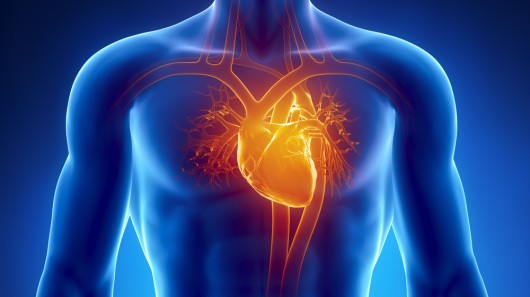Heart Disease, also known as Cardiovascular Disease (CVD)
Many people think of heart disease (or cardiovascular disease) as one condition. In fact, heart disease is a group of conditions which affects the structure and function of the heart. There are many root causes. In general, heart disease involves a build-up of plaque and cholesterol in the arteries, which become narrower or subsequently, even blocked . This process is called atherosclerosis and can result in a heart attack if the blood flow to a section of the heart muscle is completely blocked. Without quick treatment, it can lead to serious health problems or death.
Atherosclerosis
Like water through a hose, blood flows through the arteries, delivering oxygen and nutrients to various organs in our body. Atherosclerosis is a buildup of plaque, a fatty waxy material, accumulating in the walls of the large and medium-sized arteries. The result is a narrowing of the arteries, making it harder for the blood to flow through. If a blood clot forms, it can stop the flow of blood. (U.S National Library of Medicine. 2015).
Atherosclerosis is related to coronary artery disease, stroke and other conditions, depending on which artery is blocked. If the artery supplying blood to the heart becomes narrow, it is coronary artery disease (CAD). It causes angina, severe pain in the heart, or, even worse, a heart attack.
If arteries in the neck become narrow or blocked, blood flow to the brain is limited, resulting in carotid artery disease, also known as stroke. When atherosclerosis narrows or blocks an artery, creating a bulge at the site and eventually bursting, it is called an aneurysm. The most extensive and deadly site of a burst in the heart is the aorta, the largest artery in the body. This results in a death rate of 80 to 85%, even before arriving at a hospital (Rousseau H, et al. 1999).

Heart Attack
The heart muscle is one of the few muscles in the body that works constantly. Thus, it requires a constant supply of oxygen-rich blood to nourish itself. A heart attack occurs when the blood flow to a part of the heart is blocked by a clot. If the flow of blood is blocked by a clot, the part of the heart muscle supplied by that artery begins to die. Within a short time, the death of heart muscle cells causes permanent damage to the heart. Even if the person survives a heart attack and the wound is healed, scar tissue forms, partly blocking the site. Thus, the heart’s pumping ability is lessened. This leads to general health problems (Department of health and Human Service, 2013).
Since thousands of Canadians die from heart attacks every year, it is important to recognize the signs. These warning signs can vary from person to person but are usually evident before a heart attack or cardiac arrest. This sudden stop in functioning of the heart is now a medical emergency. Below are six symptoms/signs of a heart attack (U.S National Library of Medicine. 2014).
- Chest discomfort
- Discomfort in other areas of the upper body, such as neck, jaw, shoulder, arm and back
- Shortness of breath
- Sweating
- Nausea
- Light-headedness
Hypertension
Hypertension, commonly known as high blood pressure, is defined as a blood pressure measurement of more than 140 mmHg/90 mmHg (Normal = 120 mmHg/80 mmHg) (“mmHg”, millimeter of mercury, is a symbol or unit that defines blood pressure in the human body). Hypertension is a type of cardiovascular disease and the single most important risk factor for stroke (World Heart Federation, 2015). When blood pressure is high, blood vessels are stressed, causing them to clog or weaken. Damage to the arteries can create weak places that rupture easily or thin spots that balloon out the artery wall resulting in an aneurism. Increased blood pressure is a part of aging; thus people over the age of 50 are at greater risk of heart disease.
#heart #heartdisease #heartattack

Leave a Comment
You must be logged in to post a comment.